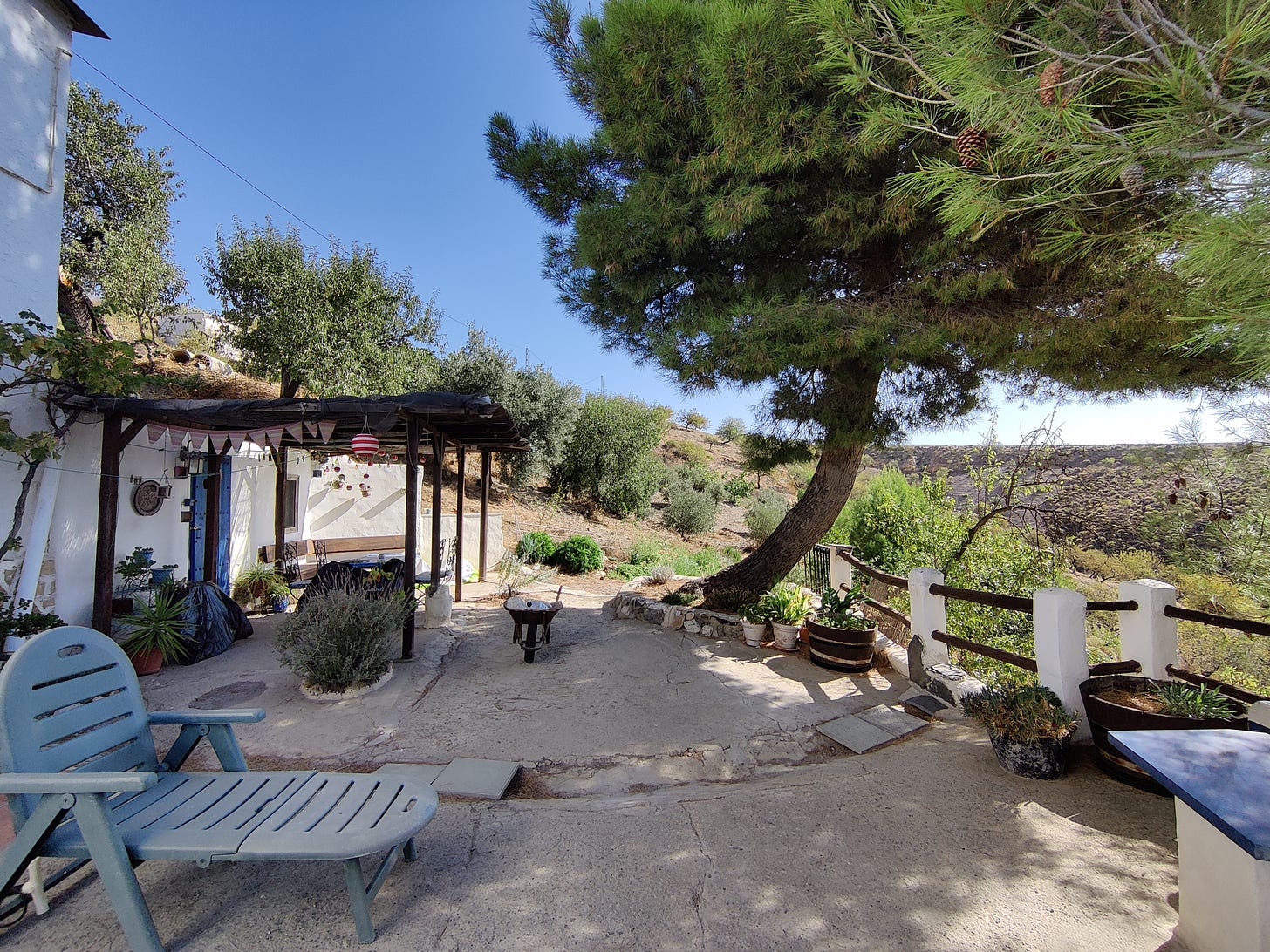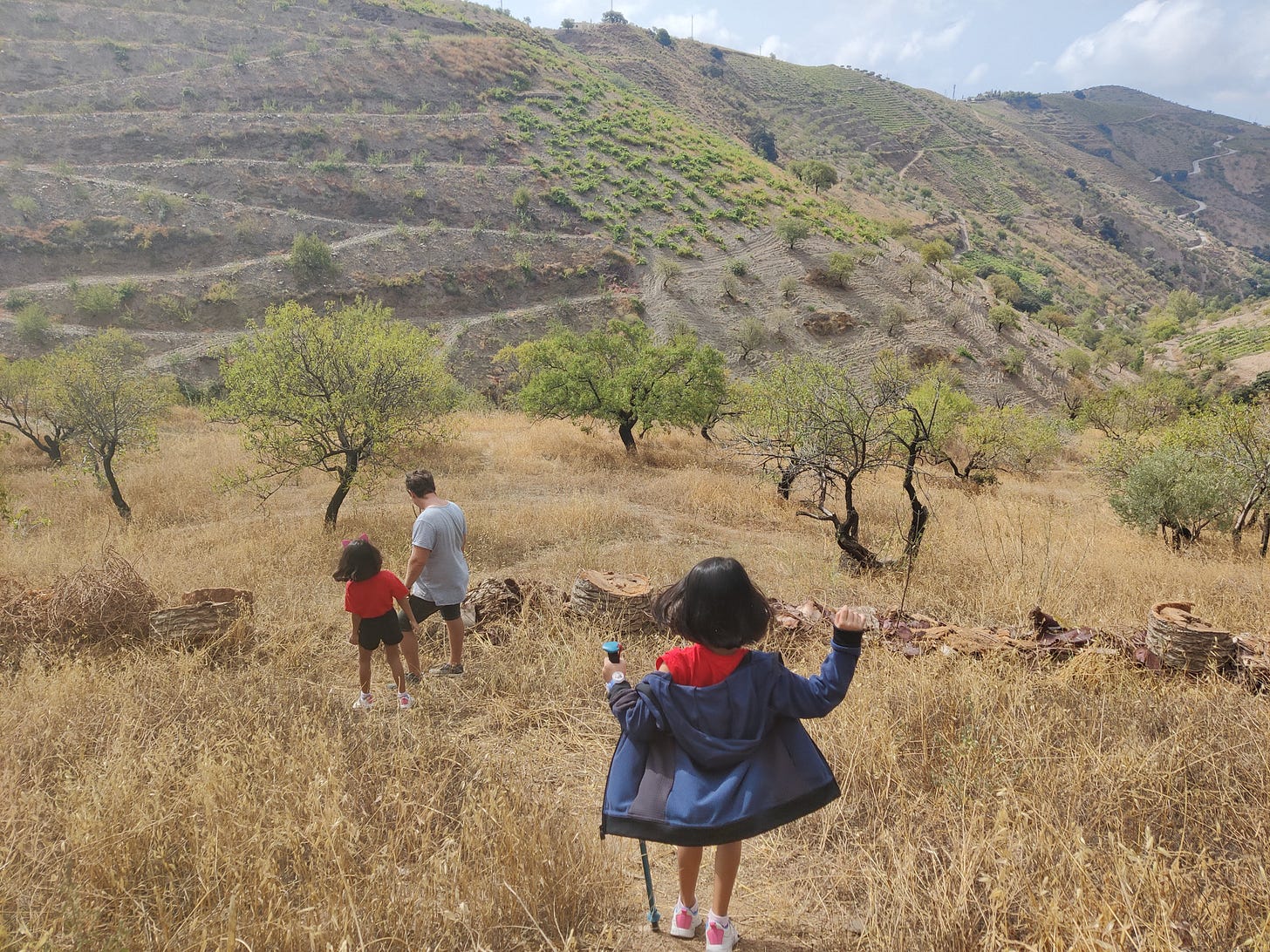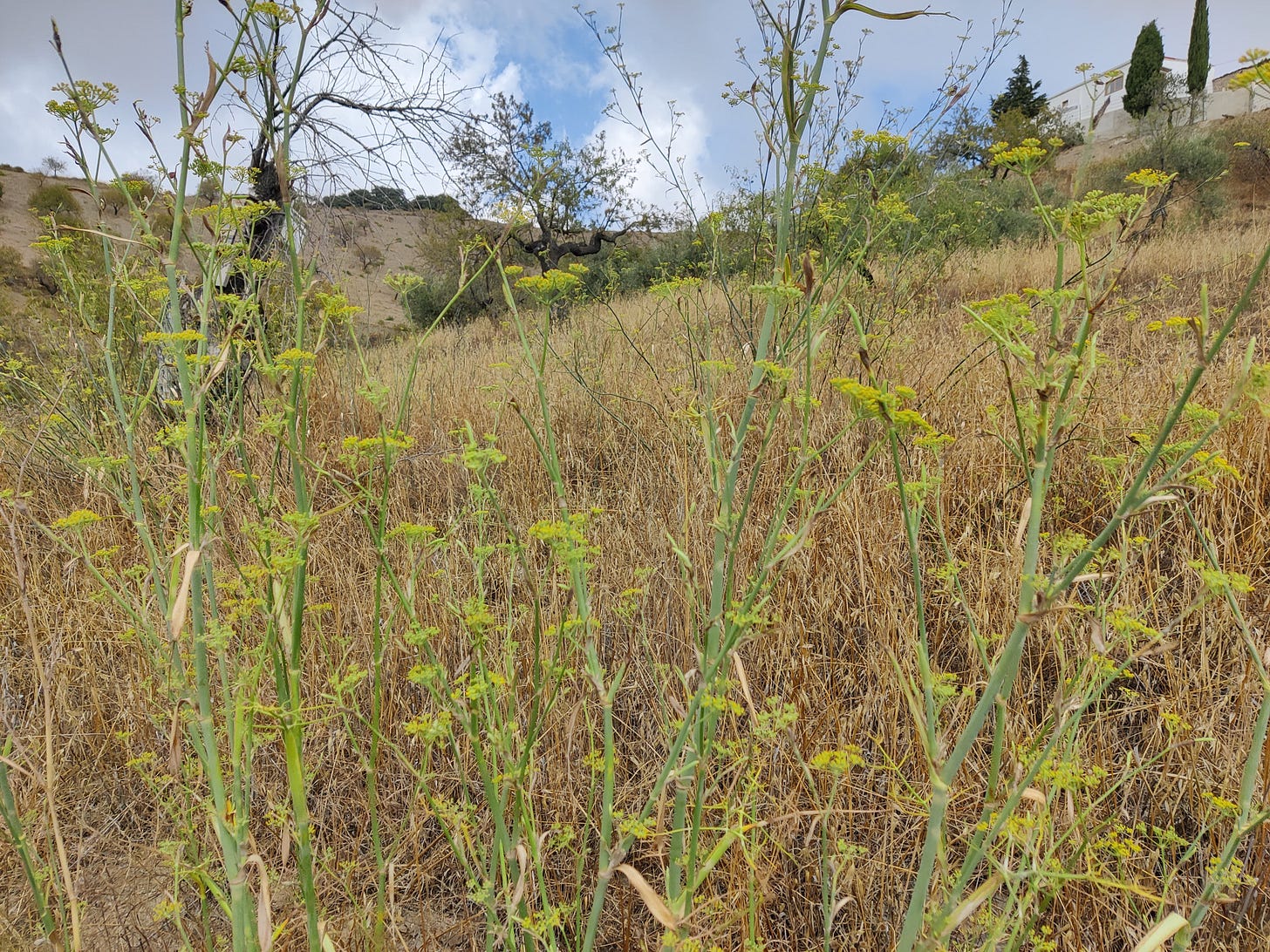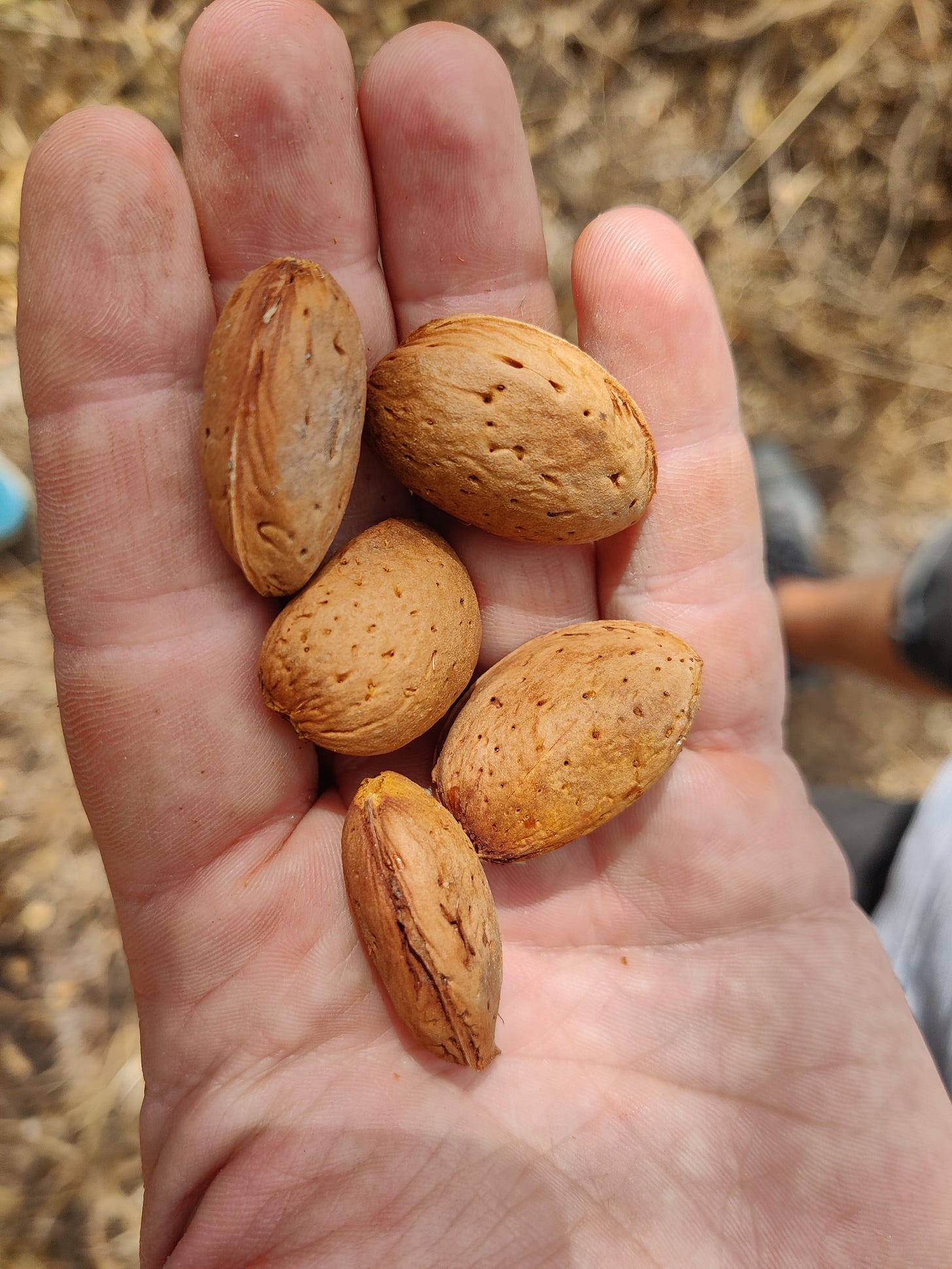What’s in a name?
A newsletter about food systems, climate change and everything connected to them
Last week, in a tiny bar in a tiny village near Burgos in northern Spain, the young local mayor, upon discovering I’m a specialist journalist focusing on food and climate issues, enthusiastically launched into his plans for the rural economy.
“We’re going for holistic farming. This means taking into account not only the crops but the animals, the environment, and the people,” he said.
I was intrigued and asked him to elaborate. He listed the practices that constitute ‘holistic farming’ - no tilling, cover crops, organic fertiliser, improving soil quality, more biodiversity, and so on.
I told him those practices sound like farming systems that have been dubbed agroecology, regenerative agriculture or conservation agriculture in different parts of the world.
This week, I heard the term again from Frank, our host in southern Spain whose farmhouse we have rented for the week so I can catch up with my sister and nieces for the first time in 20 months and stay away from the crowds while doing so.
Yes, I’m aware of how privileged I am to be able to travel and hug my loved ones in person and very grateful for the situation I am in.
Frank is originally from Sweden. He studied horticulture in Australia and is now living in Andalusia, a region famous for its Moorish architecture and vast swathes of farmland, with his partner and their children.
Three years ago, they bought an organic almond farm and have been busy turning the 1.7 hectares into a space rich with different crops and plants ever since.
“The idea is to grow almonds but also to restore the land. It’s a holistic approach,” he says.
Some of the things he has been doing to achieve this include ‘no tilling’ (meaning the soil is not prepared or disturbed in any way before planting), using manure from local goats as fertiliser, and growing plants that fix nitrogen, an essential ingredient for plant growth, in the soil.
He also grows oats and local plants in between his 250 almond trees. In fact, his farm is covered in all manners of bushes, herbs and fruit trees.
Close to the farmhouse there are rosemary bushes as well as those growing sage, lavender, lemongrass, wormwood, jalapeños and tomatoes. There are wild fennel flowers, which have an aniseed-y flavor, and fig, apricot, pomegranate and olive trees. There were few patches of bare soil - almost every square inch was covered with something or the other.
He’s doing this to attract beneficial bugs throughout the property, he said, but also, in the case of larger plants, to provide shade and other plants to cross grow.
It also creates a marked contrast between Frank’s farm and those of his neighbours, which stretch all the way to the horizon and whose grounds are bare save for what they are trying to grow - olives, almonds or grapes - and there is little vegetation.
Frank says they till the land with heavy tractors, packing the soil in. Some told him this will aerate the soil, others said this makes it easier to harvest the almonds later and yet more others say they do this because they don’t want bush fires.
However, when you compact the soil too much, it in fact hinders aeration, reduces the soil’s capacity to retain water and is more vulnerable to soil erosion, according to the European Commission’s Joint Research Centre.
For example, the rains could wash away the highly fertile layer of topsoil, which would lead to lower yields.
The UN food and agri agency FAO has said the equivalent of a soccer pitch of soil is eroded every five seconds, and the planet is on a path that could lead to the degradation of more than 90% of all the Earth’s soils by 2050.
Almonds have had a bad rep in recent years as a thirsty crop, particularly over its impact on droughts in California, which provides nearly 80% of the world’s almonds and whose almond industry is worth $6 billion.
Between 2005 and 2015, Californian farmers increased new almond orchards by 35% and after state and federal agencies cut many farmers off from imported surface water, they turned to pumping groundwater at unprecedented rates, said this 2015 article from National Geographic.
Yet climate change in the form of a historic drought currently battering western parts of the U.S. is threatening the whole industry, with many farmers abandoning the crop, NPR has reported.
As global demands soar for the healthy nut, parts of southern Spain have also been transformed in the past few years, with almond orchards taking the place of traditional wheat and sunflower fields, according to The Local Spain.
Frank, however, disputes the image of almonds as a thirsty crop that’s bad for the environment. “It is quite the opposite,” he said.
In this corner of southern Spain, they are farmed differently. His almond farm is not irrigated and none of the neighbouring farms are either, which is quite remarkable when you consider there is little rain here from May to October.
“If you were to irrigate, the plants will produce more but without irrigation, you get a more complex taste because it takes time to produce the fruits and they grow in a natural way,” he said.
He then cracks open a few pods so I can have a taste. They are nutty and sweet, far from the bland ones I’ve bought at supermarkets.
Still, it isn’t easy growing things in a fairly dry region, so Frank has built structures to capture water.
There are two water tanks near the farmhouse and three swales - low or hollow places - on the farm. The swales were all hand dug, with labour from volunteers arranged by the World Wide Opportunities on Organic Farms (WWOOF) who match visitors with farmers.
“We’ve had Swiss, French, Italians, Germans, Americans as volunteers. They come and work for a few hours a day and we feed them and teach them about organic farming,” Frank says.
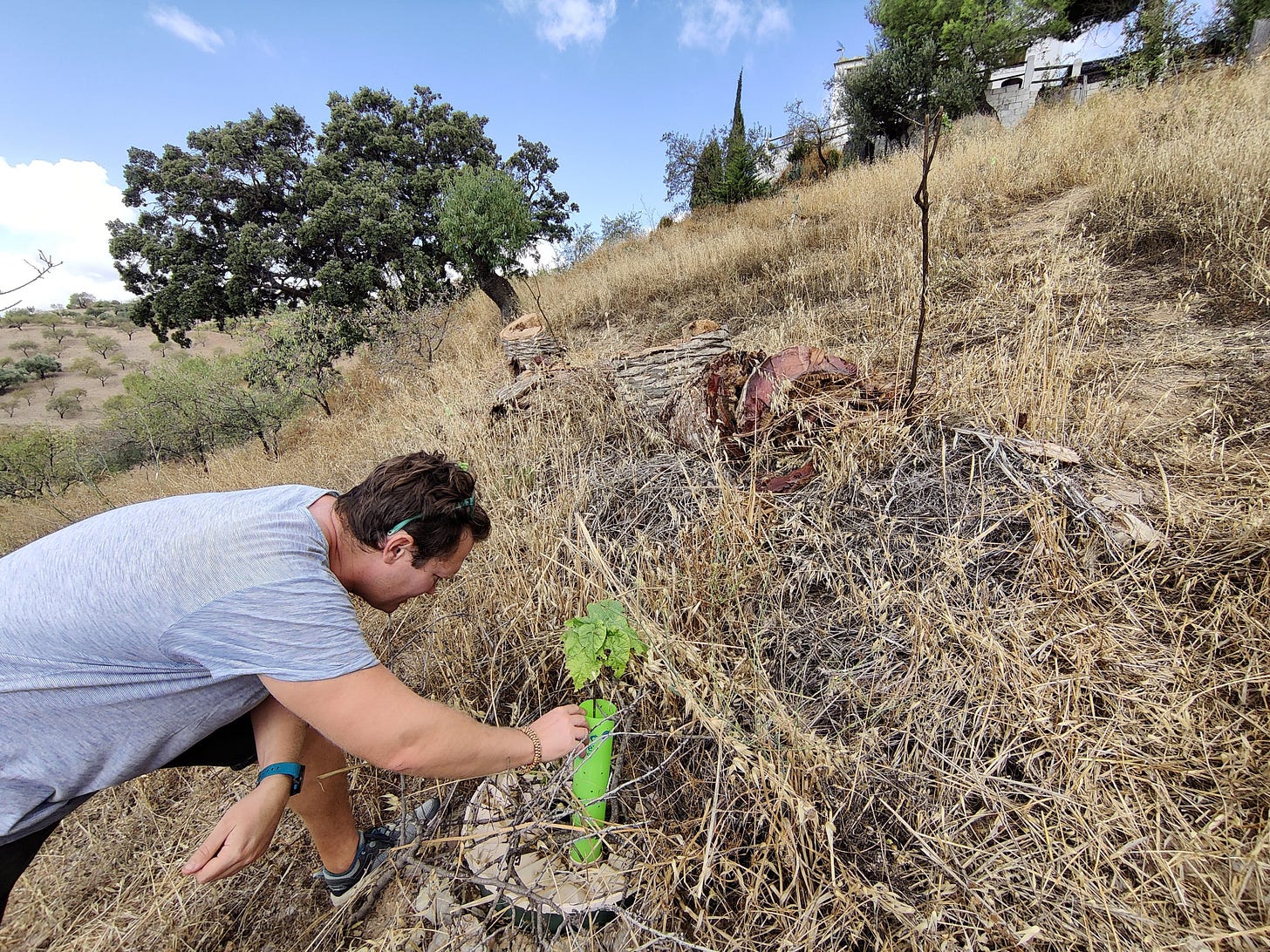
Within the swales is a Dutch system called Waterboxx® plant cocoon which says it uses significantly less water to grow trees and cuts the use of pesticides. Frank is growing drought resistant as well as nitrogen fixing plants in these. He also wants to build more birds’ nests to encourage more bird life.
The near-term work though is harvesting the almonds. This usually happens around September but it is a bit early this year, Frank says, pointing to the trees which are already laden with dozens of pods. Harvesting almonds is fairly similar to olives - large nets on the ground to collect almonds which are shaken off the branches.
Frank seems very proud of the farm, but for ‘holistic farming’ to work, it also needs to be profitable. That seems to be some way away, which is unfortunate.
If we want to tackle the climate crisis, we need farmers to adopt green practices, whether they are called holistic, regenerative, conservation or agroecology, and they must be able to live off these practices.
The farm is for “longer-term” but the income isn’t enough yet to do this as a full-time job, says Frank, who also works as a gardener in a town nearby.
As always, have a great weekend! Please feel free to share this post and send tips and thoughts on twitter @thinink, to my LinkedIn page or via e-mail thin@thin-ink.net.



